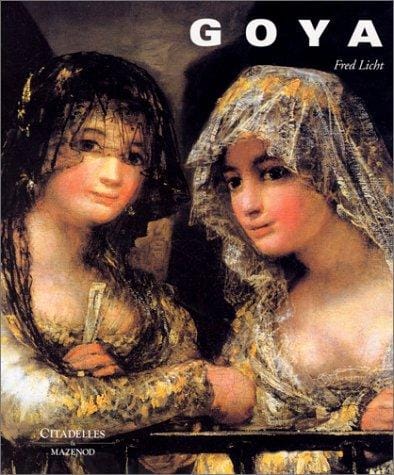Understanding Goya: From Spanish Masterpieces to Staple Pantry Goods
Discover the many faces of Goya—from Francisco Goya’s groundbreaking art to the flavor-packed products of Goya Foods and beyond—in this concise cultural guide.

Who or What Is Goya?
Type the word “Goya” into a search bar and you will see a surprisingly diverse set of results. Some pages celebrate Francisco de Goya y Lucientes, the groundbreaking Spanish painter whose unflinching works bridged the gap between Old-World classicism and modern art. Others highlight Goya Foods, the largest Hispanic-owned food company in the United States, renowned for cans of black beans and vibrant adobo seasoning. Add to that the Japanese word for bitter melon, the prestigious Spanish film awards, and even an asteroid, and it becomes clear that “Goya” is a single term with many fascinating stories behind it.
Francisco Goya: Spain’s Visionary Artist
Early Life and Court Success
Born in Fuendetodos, Spain, in 1746, Francisco Goya trained in Zaragoza before traveling to Italy to hone his technique. By his mid-thirties he had secured a position as court painter to King Charles III and later Charles IV, producing lush portraits that earned him both wealth and influence. Yet, despite his official titles, Goya brought an unmistakable touch of realism to royal portraiture, capturing the human flaws of his sitters instead of idealizing them. This subtle honesty hinted at the critical edge that would define his later work.
Dark Paintings and Social Critique
A near-fatal illness in the 1790s left Goya deaf and transformed his artistic vision. His "Caprichos" etchings skewered superstition and corruption, while the haunting "Disasters of War" series documented the brutality of Napoleon’s occupation. In his private residence, he covered walls with the now-famous "Black Paintings," raw depictions of fear, madness, and existential dread. These pieces prefigured modern movements such as Expressionism and Surrealism, making Goya a bridge between classical finesse and the rebellious, introspective art of the nineteenth and twentieth centuries.
Goya Foods: Latin Flavor in Every Pantry
History of the Brand
Fast-forward a century and a half to 1936 New York City, when Spanish immigrants Prudencio Unanue and his wife Carolina opened a small storefront selling olives and sardines to their community. They named their enterprise Goya after a brand of olive oil they admired, believing the short, catchy name would stand out on shelves. What began as a local shop has grown into a multinational company with more than 4,000 products and distribution across the Americas, Europe, and Asia, all while staying family-owned.
Popular Products and Recipes
Walk down any grocery aisle in the United States and you will find the signature blue-and-yellow Goya logo on canned beans, sazón packets, coconut water, frozen empanada dough, and ready-to-heat rice mixes. Home cooks rely on these items for authentic Latin flavor, whether preparing Puerto Rican arroz con gandules, Mexican refried beans, or Dominican habichuelas guisadas. The company’s website amplifies its impact by offering bilingual recipes and cooking videos, turning an ordinary can of chickpeas into vibrant garbanzos guisados with sofrito and culantro.
Goya in Global Languages and Culture
Beyond art and food, "goya" carries significance in multiple cultures. In Japanese, ゴーヤ refers to bitter melon, a bumpy green vegetable central to Okinawan dishes such as goya champuru, a stir-fry rumored to contribute to the island’s remarkable longevity rates. In Spain, the annual Premios Goya celebrate the best in national cinema, elevating directors like Pedro Almodóvar. There is even a Goya crater on Mercury and an asteroid named 8335 Goya, testament to the painter’s influence reaching literally out of this world.
Why the Name Resonates Today
What binds these disparate uses of “Goya” is a sense of authenticity and cultural pride. Francisco Goya painted unsparing truths of Spanish society; Goya Foods champions traditional Latin ingredients; Okinawans cherish goya for its health benefits. Each context invokes heritage, roots, and a willingness to look beneath polished surfaces toward deeper flavor or meaning. In an era obsessed with storytelling, the multi-layered narrative packed into four letters is marketing gold.
Search Trends and SEO Tips for “Goya”
From an SEO standpoint, the diversity of queries around the keyword "Goya" makes it both competitive and rewarding. Google Trends shows seasonal spikes in April, when Spain announces its Goya Award nominations, and October, the painter’s birth month. Recipe traffic meanwhile peaks in late summer as gardens overflow with bitter melon. To rank, pair the core keyword with clarifiers: “Goya painter analysis,” “Goya black beans nutrition,” or “how to cook goya champuru.” Incorporate structured headings, alt text for art images, and schema markup for recipes or artist bios to improve visibility.
Final Thoughts
Whether you are admiring the stark beauty of “Saturn Devouring His Son,” simmering a pot of seasoned pinto beans, or experimenting with a bitter-melon stir-fry, encountering “Goya” means engaging with a living legacy that crosses centuries and continents. Few names can claim relevance in fine art, everyday cooking, horticulture, film, and astronomy. The next time you hear the word, take a moment to ask which Goya story is being told—and savor the richness behind it.